This pub takes its name from one of Billericay’s old inns. The Blue Boar was a near neighbour of the pub which now bears its name. In the early 1800s, three coaches a day stopped in High Street, on their journey between Southend and London. The Rising Sun ran a daily horse-drawn service, leaving at 7am. Opposite the Rising Sun, and behind a blacksmith’s shop, was the Half Moon beerhouse. It had been thought that the Blue Boar stood on the site of 39 High Street (these premises), but now, number 49 is believed to mark the spot.
Prints and text about The Blue Boar.
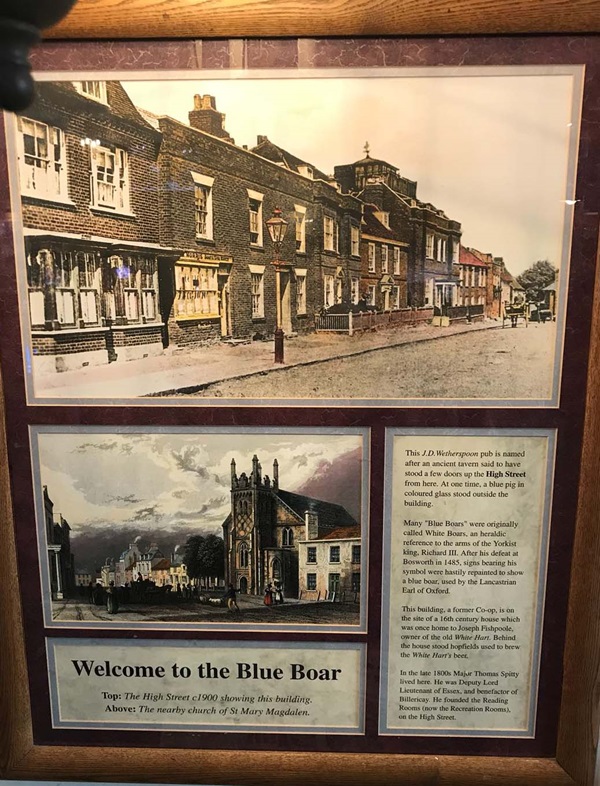
The text reads: This J D Wetherspoon pub is named after an ancient tavern said to have stood a few doors up the High Street from here. At one time, a blue pig in coloured glass stood outside the building.
Many ‘Blue Boars’ were originally called White Boars, and heraldic reference to the arms of the Yorkist king, Richard III. After his defeat at Bosworth in 1485, signs bearing his symbol were hastily repainted to show a blue boar, used by the Lancastrian Earl of Oxford.
This building, a former Co-op, is on the site of a 16th century house which was once home to Joseph Fishpoole, owner of the old White Hart. Behind the house stood hopfields used to brew the White Hart’s beer.
In the late 1800s Major Thomas Spitty lived here. He was Deputy Lord Lieutenant of Essex, and benefactor of Billericay. He founded the Reading Rooms (now the Recreation Rooms), on the High Street.
Top: The High Street c1900 showing this building
Above: The nearby church of St Mary Magdalen.
Prints and text about the pilgrim fathers.
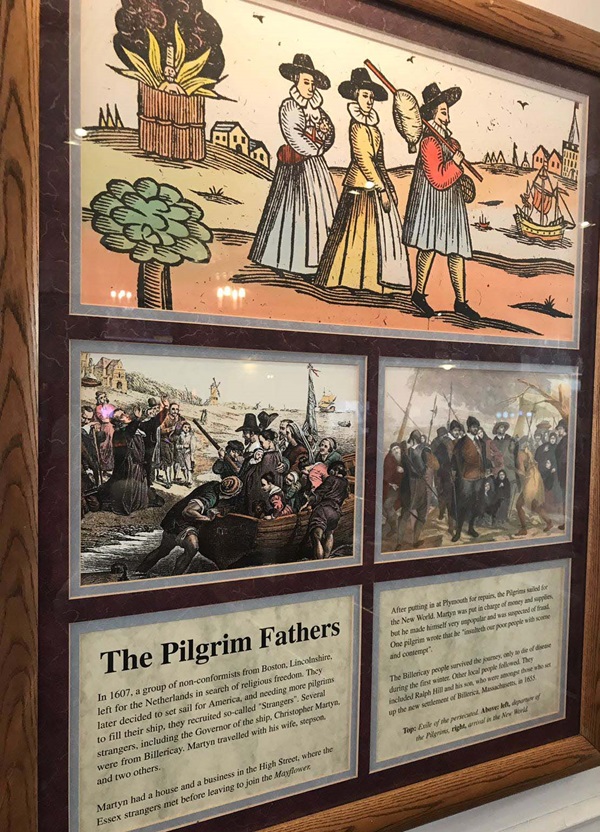
The text reads: In 1607, a group of non-conformists from Boston, Lincolnshire, left for the Netherlands in search of religious freedom. They later decided to set sail for America, and needing more pilgrims to fill their ship, they recruited so-called ‘Strangers’. Several strangers, including the Governor of the ship, Christopher Martyn, were from Billericay. Martyn travelled with his wife, stepson and two others.
Martyn had a house and a business in the High Street, where the Essex strangers met before leaving to join the Mayflower.
After putting in at Plymouth for repairs, the pilgrims sailed for the New World. Martyn was put in charge of money and supplies, but he made himself very unpopular and was suspected of fraud. One pilgrim wrote that he “insulteth our poor people with scorne and contempt”.
The Billericay people survived the journey, only to die of disease during the first winter. Other local people followed. They included Ralph Hill and his son, who were amongst those who set up the new settlement of Billerica, Massachusetts, in 1655.
Prints and text about the history of Billericay.
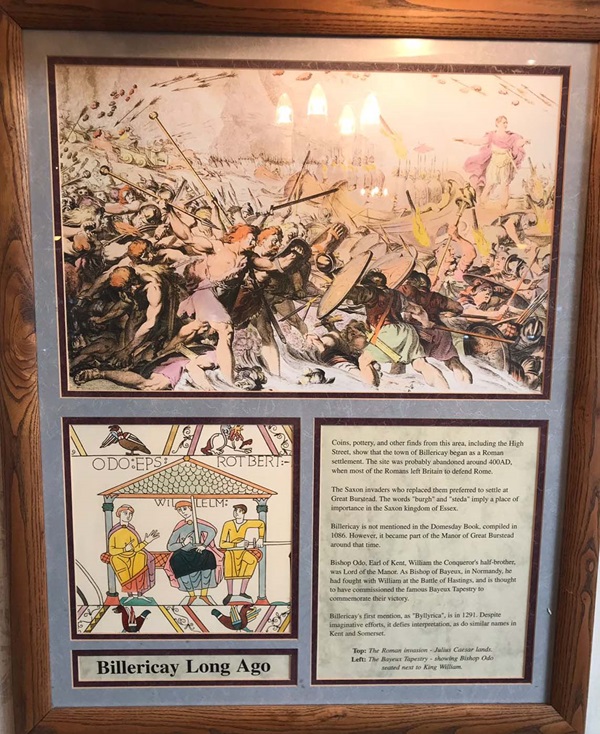
The text reads: Coins, pottery, and other finds from this area, including the High Street, show that the town of Billericay began as a Roman settlement. The site was probably abandoned around 400AD, when most of the Romans left Britain to defend Rome.
The Saxon invaders who replaced them preferred to settle at Great Burstead. The words ‘burgh’ and ‘steda’ imply a place of importance in the Saxon kingdom of Essex.
Billericay is not mentioned in the Domesday Book, compiled in 1086. However if became part of the Manor of Great Burstead around that time.
Bishop Odo, Earl of Kent, William the Conqueror’s half-brother was Lord of the Manor. As Bishop of Bayeux, in Normandy, he had fought with William at the Battle of Hastings, and is thought to have commissioned the famous Bayeux Tapestry to commemorate the victory.
Billericay’s first mention, as ‘Byllyrica’, is in 1291. Despite imaginative efforts, it defies interpretation, as do similar names in Kent and Somerset.
Top: The Roman invasion – Julius Caesar lands
Left: The Bayeux Tapestry – showing Bishop Odo seated next to King William.
Prints and text about the Billericay martyrs.
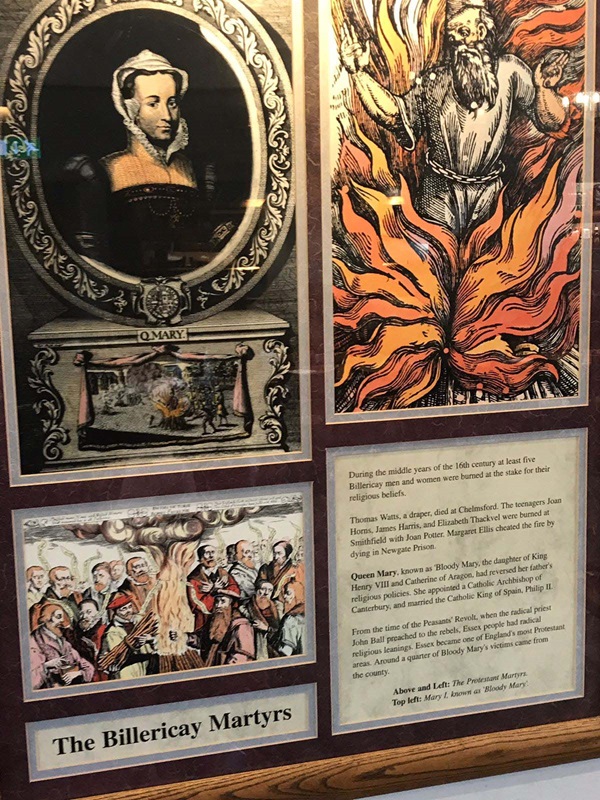
The text reads: During the middle years of the 16th century at least five Billericay men and women were burned at the stake for their religious beliefs.
Thomas Watts, a draper, died at Chelmsford. The teenagers Joan Horns, James Harris, and Elizabeth Thackvel were burned at Smithfield with Joan Potter. Margaret Ellis cheated the fire by dying in Newgate Prison.
Queen Mary, known as ‘Bloody Mary’, the daughter of King Henry VIII and Catherine of Aragon, had reversed her father’s religious policies. She appointed a Catholic Archbishop of Canterbury, and married the Catholic King of Spain, Philip II.
From the time of the Peasants’ Revolt, when the radical priest John Ball preached to the rebels, Essex people had radical religious leanings. Essex became one of England’s most Protestant areas. Around a quarter of Bloody Mar’s victims came from the country.
Above and left: The Protestant Martyrs
Top left: Mary I, known as ‘Bloody Mary’.
Photographs of Billericay Station, c1910.
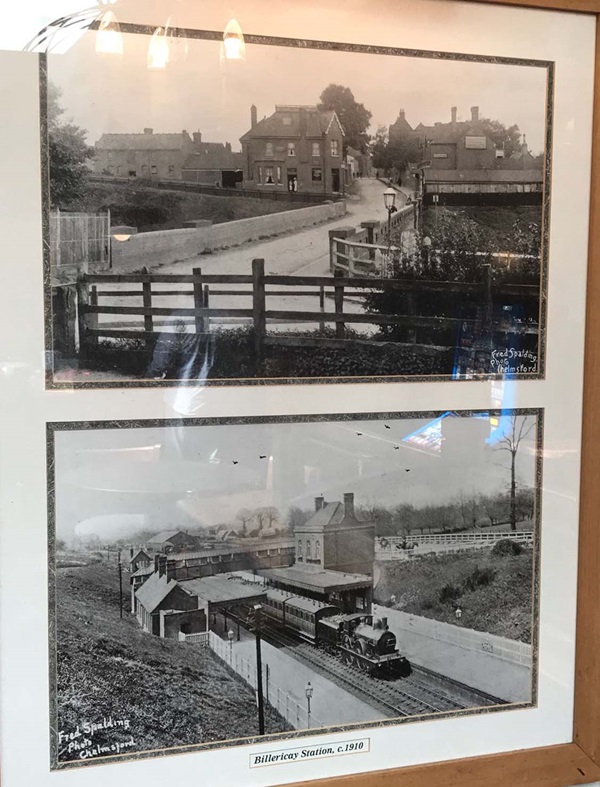
Photographs of High Street, Billericay, c1910.
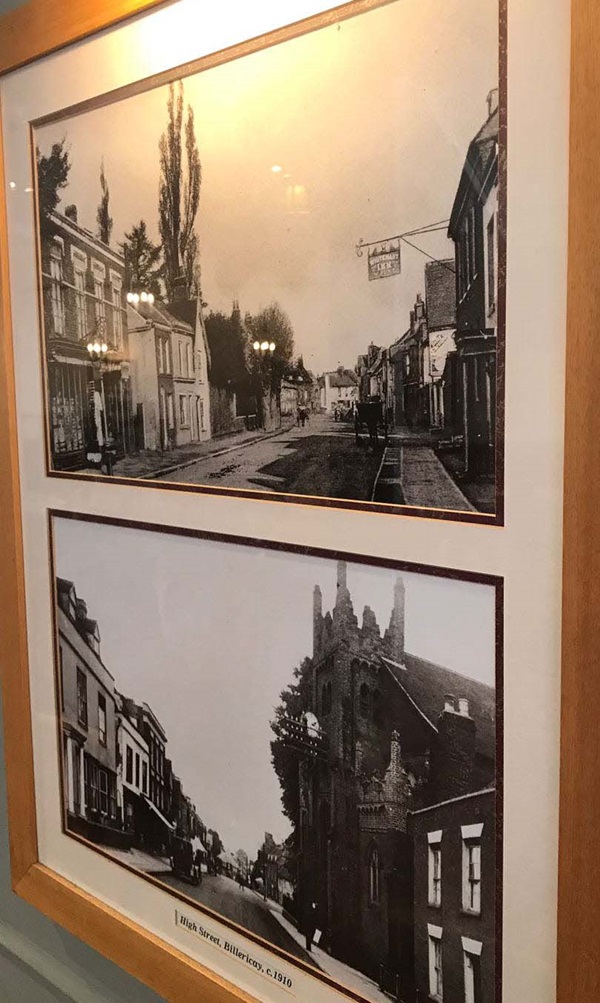
Photographs of South Green, Billericay, c1905.
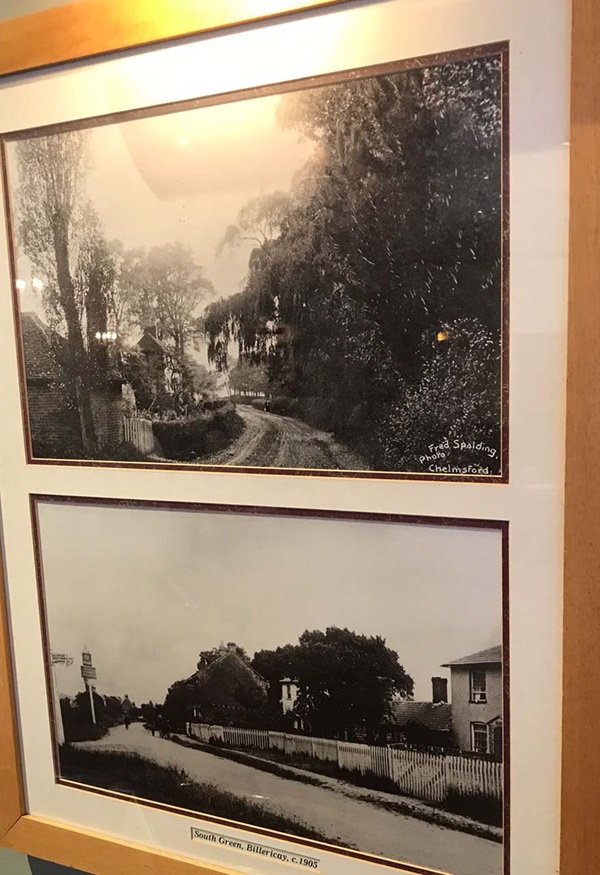
External photograph of the building – main entrance
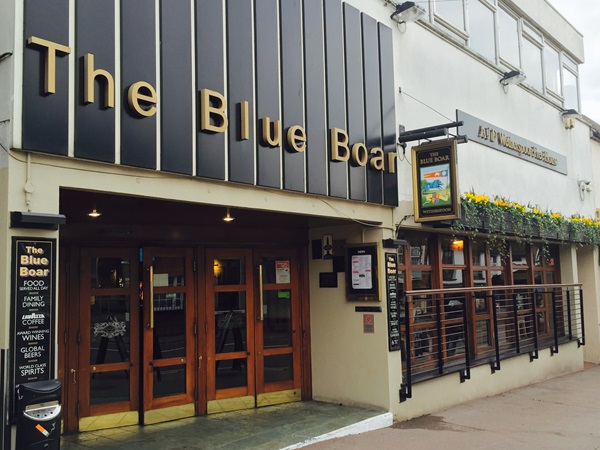
If you have information on the history of this pub, then we’d like you to share it with us. Please e-mail all information to: pubhistories@jdwetherspoon.co.uk